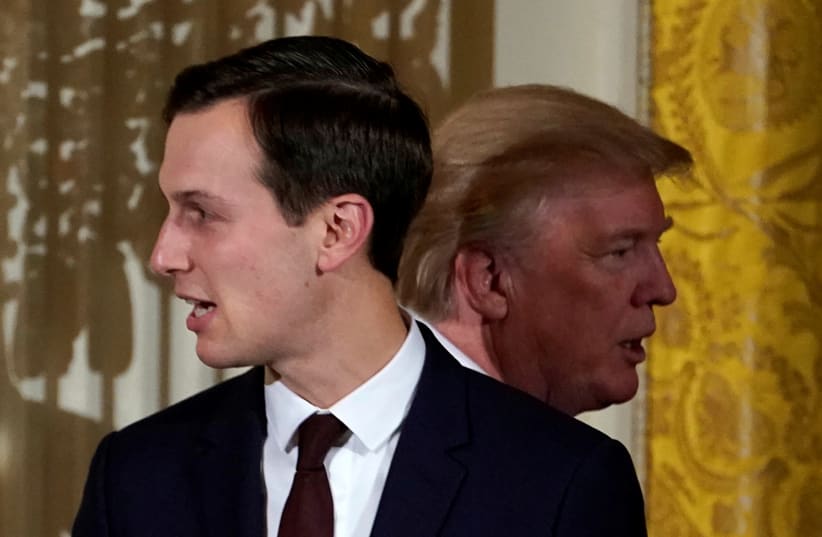While very little is really known about the Mideast peace framework that the Trump administration has been working on for the last two years, one of the basic assumptions has been that it is written in a document that will be presented at the right time.
That assumption was based on comments some of the architects of the plan – US President Donald Trump’s senior advisor and son-in-law Jared Kushner and the president’s special representative for international negotiations Jason Greenblatt – have made.
Earlier this month, at an event sponsored by the Washington Institute for Near East Policy, Kushner spoke repeatedly of a document.
“What we’ve put together over the last year is, I would say, more of an in-depth operational document that shows what we think is possible and how the people can live together, how security could work, how interaction can work and really how do you try to form the outline of what a brighter future could be,” he said.
About a week earlier, he said in another public appearance that the plan would be presented after Ramadan, which ends on June 4, leaving the impression that there would be a single plan that would be rolled out on a specific date.
Greenblatt also left that impression in public comments he made. He told Fox News 10 days ago that the plan would not be released until after Shavuot, which beings on June 9.
Greenblatt told Fox that the plan deals with the “core issues” of the conflict and covers both political and economic fronts. It is, he said, “false to say that it’s only an economic plan. It’s both political and economic.”
Even as one deadline after the next for the plan’s rollout had come and gone over the last 18 months, there was consistent talk of a detailed plan of nearly 200-pages.
It came as somewhat of a surprise, therefore, that when the White House finally announced something concrete about the plan on Sunday, it was the convening of an “economic workshop” in Bahrain to get countries and businessmen from around the world to invest in the peace deal – a type of donor conference on steroids to raise tens of billions of dollars to benefit the Palestinian, Jordanian, Egyptian and Lebanese economies.
The apparent aim is to use this money – the goal is a reported $68 billion – to convince the Palestinians and other countries in the region that it is worth making compromises for peace, because those compromises will lead to a fundamental improvement in economies throughout the region.
That there would be a massive economic component to this plan was never a secret. But what was surprising was that the two elements – the political and the economic – would be separated in both time and place.
US officials, up until Sunday, had given no indication that the roll-out would be gradual and in stages; that first would come the economic aspect to be introduced in Bahrain, and then later the political section, likely to be presented elsewhere.
Now that this is apparently the way the plan will be rolled out gives the impression that this is a last minute shift of tactics – an audible, to use an American football metaphor, at the line of scrimmage. It seems an attempt by the Trump administration – which has been talking in broad terms about the plan for so long – to finally present something, though it is neither convinced nor confident that the timing is right to present everything, specifically its views on how to solve the core issues.
The Jerusalem Post last week reported senior officials saying that the plan was not set in stone, and that it was being tweaked and evaluated in light of the realities on the ground. According to these officials, the plan was being adjusted as new information came in from various quarters.
Deciding to first present the “economic peace” part of the package, and only later – at a still undetermined time – lay out the political component is no small tweak, a sign that the signals the administration was picking up from the ground against presenting the political part of the plan at this time must have been very strong.
